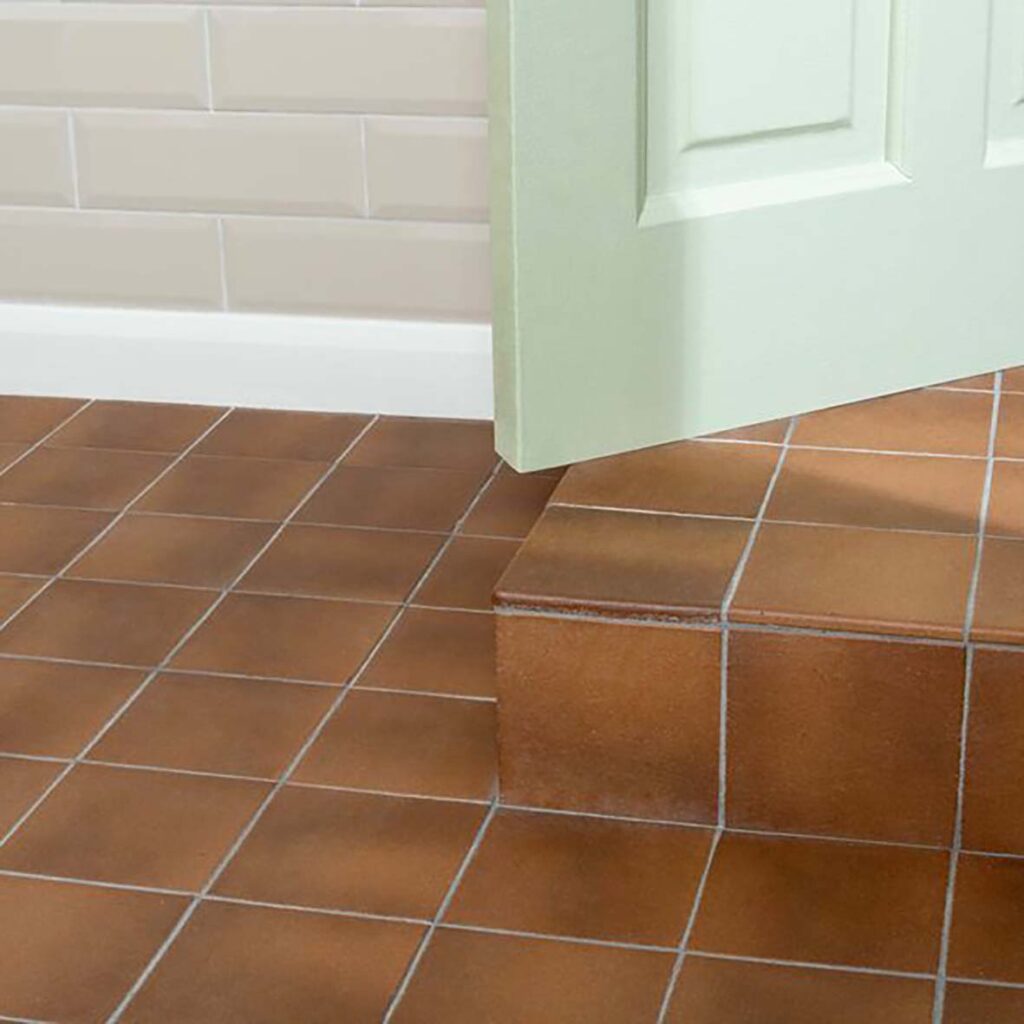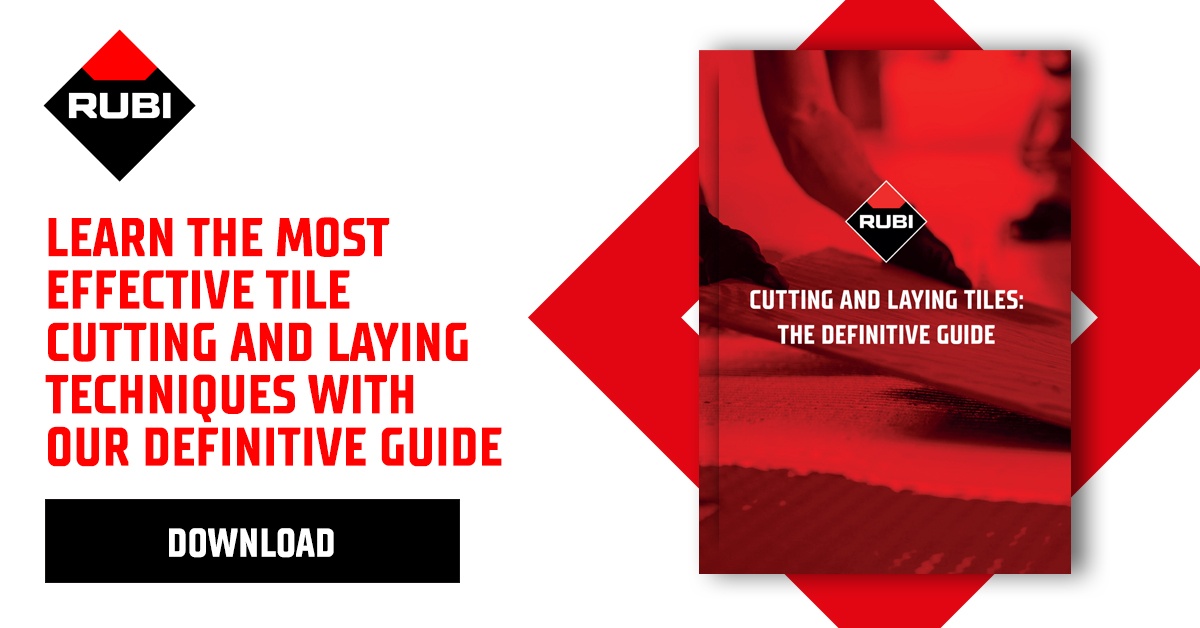Quarry tiles are known for their durability, rustic appearance, and resistance to wear. This makes them a popular choice for both interior and exterior flooring. However, over time, quarry tiles can accumulate dirt, grime, and stains that diminish their natural beauty. To maintain their appearance and keep them in pristine condition, regular cleaning and refreshing are essential. In this blog we will discuss how to tile and clean quarry tiles.


Understanding the Nature of Quarry Tiles
Quarry tiles are made from natural clay and are usually left unglazed, making them porous and susceptible to absorbing moisture, dirt, and stains. Because of their porous nature, it’s essential to use products that penetrate deep into the tiles and clean effectively without causing damage.
LTP and Lithofin are two highly reputable brands to use for learning how to clean quarry tiles. Each provides a range of products that tackle specific cleaning challenges, from removing ingrained dirt to sealing and protecting the tiles afterward.
Step 1: Preparing the Surface
Before using any cleaning products, it’s important to prepare the surface. Sweep or vacuum the quarry tile floor to remove any loose dirt, dust, or debris. If the tiles have been sealed previously, it’s advisable to check whether the sealant is still intact. If the tiles show signs of ingrained dirt or staining despite regular cleaning, then it’s time for a deep clean.
Step 2: How to Clean Quarry Tiles with LTP and Lithofin Products
Both LTP and Lithofin offer professional-grade products for this purpose, but the process of cleaning and refreshing quarry tiles involves more than just applying a cleaner—knowing how to clean quarry tiles with proper preparation, application, and post-cleaning care is critical for best results.

LTP Grimex for Deep Cleaning
LTP Grimex is one of the most effective solutions for deep cleaning heavily soiled quarry tiles. It works on a wide variety of surfaces and is excellent for removing old layers of wax, oil, grease, and general dirt buildup.
- Application: Dilute Grimex as per the instructions, depending on the level of dirt. Typically, a ratio of 1:10 (cleaner to water) works well for standard cleaning, but for tougher stains or grease, a stronger ratio of 1:3 may be necessary. Spread the solution evenly over the floor with a mop or sponge and allow it to sit on the surface for 10-15 minutes to loosen the dirt.
- Agitation: After the solution has settled, use a stiff brush to agitate the surface. This will help lift dirt from the pores of the tiles. Be sure to scrub in all directions for even coverage.
- Rinsing: Rinse the floor thoroughly with clean water, ensuring all residues of the cleaner are removed. This is especially important if you plan to reseal the floor afterward.
Lithofin Wexa for Oil and Grease Removal
If you’re dealing with particularly stubborn grease or oil stains, Lithofin Wexa is highly recommended. Wexa is a strong degreasing agent that effectively breaks down oily residues embedded in porous tiles.
- Application: Wexa is typically applied neat or slightly diluted, depending on the severity of the stains. Pour or mop the solution directly onto the stained areas and let it sit for 5-10 minutes.
- Scrubbing: Use a stiff bristle brush or scrubbing pad to work the product into the surface, ensuring the oil or grease is broken down.
- Rinsing: Once you’ve scrubbed the affected areas, rinse thoroughly with water. Wexa can leave a film if not rinsed off properly, so be sure to clean it away completely.
Step 3: Sealing the Quarry Tiles
Once you know how to clean quarry tiles, sealing them is crucial to protect the surface from future stains and dirt build-up. Both LTP and Lithofin offer high-quality sealants designed to protect porous surfaces like quarry tiles.

LTP Mattstone for Protection
LTP’s Mattstone sealer is ideal for quarry tiles, especially in areas prone to high foot traffic or exposure to moisture. It penetrates deeply into the pores of the tiles, forming a protective barrier that repels water, oil, and dirt while maintaining the tile’s natural appearance.
- Application: Ensure the surface is completely dry before applying the sealer. Use a soft cloth or sponge to spread the sealer evenly over the floor. For best results, apply two to three coats, allowing each coat to dry thoroughly before applying the next.
- Curing Time: After the final coat, allow the sealer to cure for at least 24 hours before walking on the floor. This ensures the protection is fully activated and long-lasting.
Lithofin MN Stain-Stop
Lithofin’s MN Stain-Stop is another excellent choice for sealing quarry tiles. It offers both water and oil repellent properties and is known for its long-lasting protection, even in challenging conditions.
- Application: Similar to Mattstone, apply MN Stain-Stop with a cloth, ensuring even coverage. After the initial coat dries, apply a second coat for maximum protection. MN Stain-Stop tends to enhance the natural colour of the tiles, giving them a slightly richer appearance.
- Maintenance: Once sealed, regular maintenance is easy. Sweeping or mopping with water or a mild detergent will keep the surface looking fresh, with the sealant preventing deep staining or dirt accumulation.
Step 4: Regular Maintenance
After you know how to clean quarry tiles and seal them, keeping quarry tiles in good condition is important. This involves regular inspection and light cleaning. LTP and Lithofin offer pH-neutral cleaners that are gentle on sealed surfaces, ensuring your tiles stay protected for longer. Using a product like LTP Floorshine or Lithofin MN Easy-Care will clean without stripping the sealer, maintaining the beauty and functionality of your quarry tiles.
How to Clean Quarry Tiles
Refreshing and maintaining quarry tiles doesn’t have to be a daunting task. By using high-quality products from LTP or Lithofin, such as LTP Grimex, Lithofin Wexa, LTP Mattstone, and Lithofin MN Stain-Stop, you can achieve professional results that keep your quarry tiles looking fresh, clean, and protected for years to come. Make sure to share these tips with your colleagues and stay up to date with the latest blog from us.



Post a comment